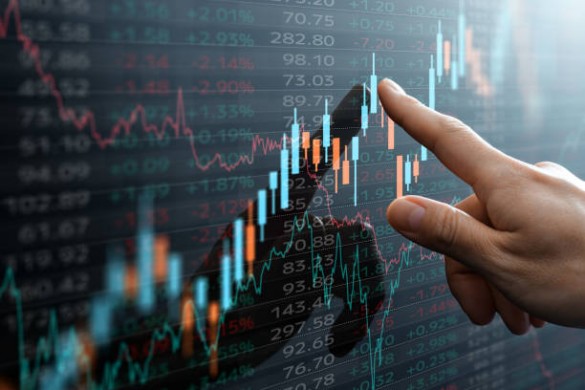After writing yesterday about James Bullard’s concern about the mounting risk of some asset-price bubbles bursting, I did a bit more investigation. Little did I know also that Thierry LaDuguie would write about Sentiment Analysis and Stock Market Timing and charting the S&P index here on ADVFN, when I had planned to continue writing about the concerns about what is happening and what could happen on Wall Street.
Copies of the chart accompanying this article have reportedly been making the rounds of Wall Street analysts and investment firms. I find it to be significant enough that it should be seen by ADVFN readers. My personal philosophy is that any given chart on its own does not provide adequate information from which to draw definitive conclusions. However, when considered as a part of the larger puzzle, any single piece could be the one piece that completes the bigger picture. In this case, it’s not a pretty picture.
Take Bullard’s concern about the increasing risk of the stock bubble bursting, based upon establish guidelines at the U.S. Federal Reserve, and remember that he is the President of the St. Louis Fed. Add to that Thierry’s comment right here at ADVFN that “I believe that those who are calling for a major correction, including me, will be proven right, but the question is when will the trend turn down? The current state is nearly one year old and the stock market has yet to turn down. This extreme in bullish sentiment will only change when the stock market trend turns down and the decline becomes large in terms of magnitude and duration.” Finally, add in the “Scary Parallel” chart.
The Scary Parallel is an overlay of two charts, comparing the current movement of S&P Index to it’s pattern prior to the crash of 1929. The similarity of the patterns were first spotted by Tom DeMark, founder and CEO of DeMark Analytics. Tom McClellan, who is thought to have first published the chart, readily acknowledges that, just because the charts are similar now, doesn’t mean that they will continue to follow the same pattern moving forward – a philosophy with which I totally agree. Nonetheless, I also agree with him that “between now and May 2014, there is plenty of reason for caution.” And he was speaking in reference only to the chart. I am saying it in reference to all three components that I have previously mentioned.
The amplitude of the two lines is different, as noted by the left and right axes, but the amplitude is not a factor. The concern is the virtually identical pattern over the same relative period of time.
Please do not misinterpret what I am saying. I am not predicting a crash. However, I am saying something similar to what Mr. Bullard said, i.e., that the risk is increasing that the stock market bubble is about to burst. Chief Investment Stragist for Money Morning, Keith Fits-Gerald said yesterday that it is no a question of IF we are going to experience a correction, but WHEN. The good news is that he, and others, see it as a bubble bursting, not a market crashing, although I would add that global economic instability could cause more than a bubble to burst. Not to mention what panic would do.
Doug Kass, President of Seabreeze Partners, has been one of the major purveyors of the Scary Parallel, but even he tempers his analysis, saying, “While investment history doesn’t necessarily repeat itself, it does rhyme.” In his blog post this morning, Kass noted that he still believes that the reward still outweighs the risk in the market, but not to the extent that it makes investing statistically attractive.
In fact, a bursting bubble may be the correction that the market needs to become realistic again.

 Hot Features
Hot Features













